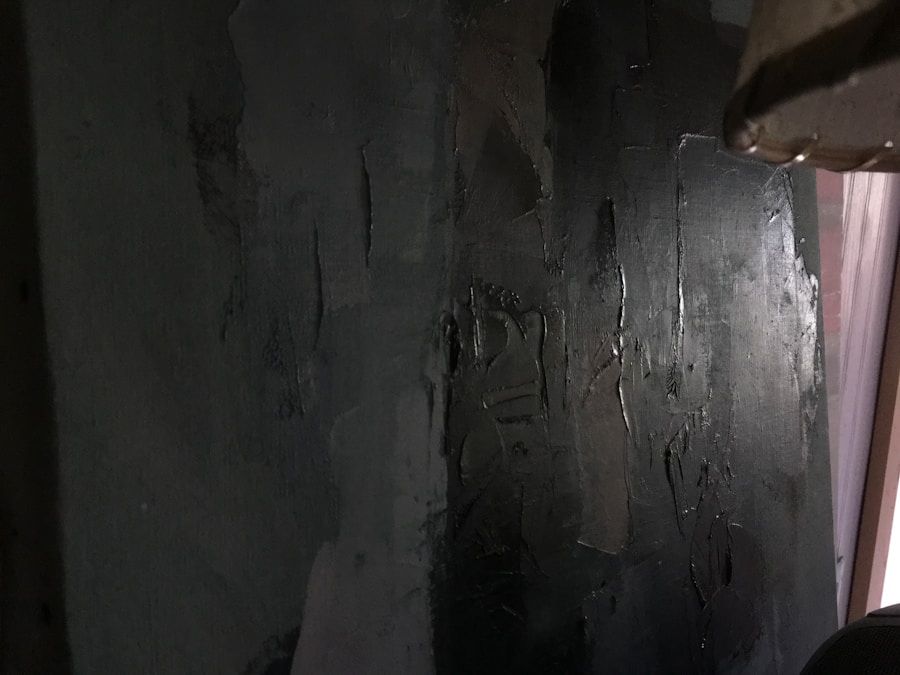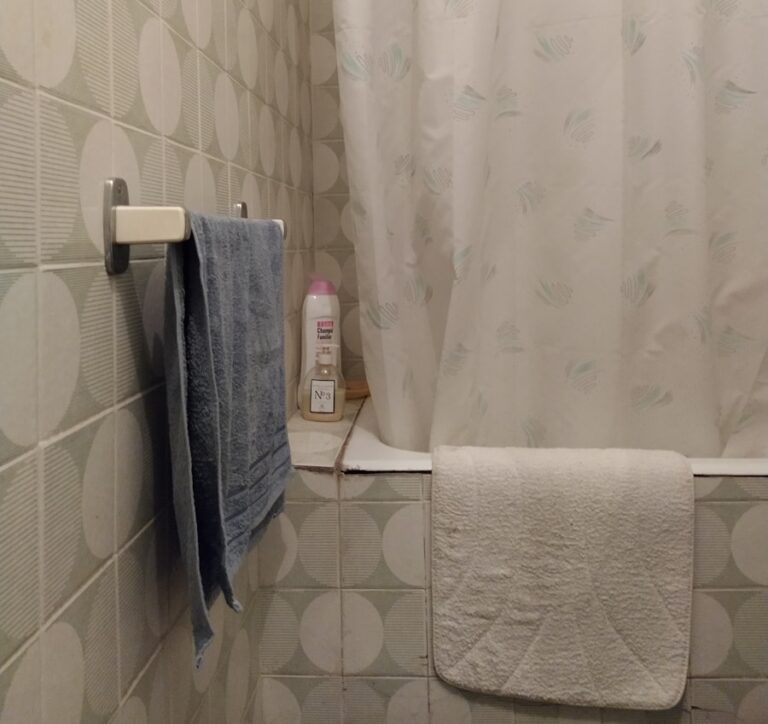Mildew is a common nuisance that plagues many bathrooms, often manifesting as unsightly black or green patches on walls, tiles, and fixtures. Understanding the causes of this persistent problem is crucial for effective prevention and remediation. At its core, mildew thrives in environments characterized by high humidity and poor ventilation.
Bathrooms, with their frequent exposure to water from showers, baths, and sinks, create an ideal breeding ground for mold spores. When moisture lingers on surfaces without adequate airflow, it fosters the perfect conditions for mildew to flourish. In addition to humidity, other factors contribute to the growth of mildew in bathrooms.
The presence of organic materials, such as soap scum, hair, and skin cells, can provide nourishment for mildew spores. Furthermore, inadequate cleaning practices can exacerbate the problem, allowing mildew to establish itself more firmly. Understanding these underlying causes is essential for homeowners seeking to maintain a clean and healthy bathroom environment.
By addressing the root causes of mildew growth, individuals can take proactive steps to mitigate its presence and protect their living spaces.
Key Takeaways
- High humidity and poor ventilation are common causes of bathroom mildew
- Regular cleaning and proper ventilation can help prevent mildew growth
- Use a mixture of water and vinegar or hydrogen peroxide to clean existing mildew
- Look for products with mold and mildew resistant properties for prevention
- Install and use exhaust fans to maintain proper ventilation in the bathroom
- Wipe down wet surfaces and fix any plumbing leaks to prevent moisture buildup
- Address plumbing leaks and moisture issues promptly to prevent mildew growth
- Call in professional help if mildew is widespread and difficult to remove
Preventative Measures to Keep Mildew at Bay
Preventing mildew from taking hold in the bathroom requires a multifaceted approach that combines good habits with strategic interventions. One of the most effective preventative measures is to ensure that the bathroom is well-ventilated. This can be achieved by installing exhaust fans that remove humid air from the space, particularly during and after showers.
Additionally, leaving windows open when weather permits can help circulate fresh air and reduce moisture levels. Regularly checking and maintaining these ventilation systems is vital to ensure they function optimally. Another key strategy in preventing mildew is to adopt a routine cleaning schedule that targets areas prone to moisture accumulation.
This includes regularly scrubbing tiles, grout lines, and shower curtains with appropriate cleaning solutions. Using mildew-resistant products can also be beneficial in creating a hostile environment for mold spores. Homeowners should consider using caulk or sealants designed to resist moisture in areas where water tends to pool or accumulate.
By implementing these preventative measures consistently, individuals can significantly reduce the likelihood of mildew developing in their bathrooms.
Cleaning Techniques for Removing Existing Mildew

When mildew has already established itself in a bathroom, prompt action is necessary to eliminate it effectively. The first step in this cleaning process is to gather the right tools and materials. Homeowners should equip themselves with gloves, masks, and scrubbing brushes to protect themselves from inhaling spores or coming into direct contact with mold.
A mixture of water and vinegar or a commercial mildew remover can be effective in breaking down the mildew’s hold on surfaces. To begin the cleaning process, one should focus on the most affected areas, such as shower walls, tiles, and grout lines. Applying the cleaning solution generously and allowing it to sit for several minutes can help loosen stubborn mildew stains.
Afterward, scrubbing with a brush or sponge will aid in removing the mildew from surfaces. Rinsing thoroughly with water is essential to ensure that no residue remains, as this could encourage further growth. For persistent mildew stains, repeating the process may be necessary until the surfaces are completely clean.
Choosing the Right Products for Mildew Prevention
| Product | Active Ingredient | Prevention Duration | Application Frequency |
|---|---|---|---|
| Clorox Regular-Bleach | Sodium Hypochlorite | Up to 12 months | Every 7 days |
| Concrobium Mold Control | Sodium Carbonate | Up to 14 days | Every 14 days |
| Tilex Mold & Mildew Remover | Sodium Hypochlorite | Up to 7 days | As needed |
Selecting the right products for mildew prevention is crucial for maintaining a clean and healthy bathroom environment. Homeowners have a variety of options available, ranging from natural solutions to commercial cleaners specifically designed to combat mold and mildew. For those who prefer eco-friendly alternatives, vinegar and baking soda are popular choices due to their natural antifungal properties.
These substances can effectively inhibit mildew growth without introducing harsh chemicals into the home. On the other hand, there are numerous commercial products available that offer targeted solutions for mildew prevention. These products often contain fungicides that actively work to prevent mold spores from settling on surfaces.
When choosing a commercial cleaner, it is essential to read labels carefully and select products that are specifically formulated for bathroom use. Additionally, opting for mildew-resistant paints and sealants can provide an extra layer of protection against moisture accumulation and mold growth. By making informed choices about cleaning products, homeowners can enhance their efforts in preventing mildew in their bathrooms.
Maintaining Proper Ventilation in the Bathroom
Proper ventilation is one of the most critical factors in preventing mildew growth in bathrooms. Without adequate airflow, humidity levels can rise significantly after showers or baths, creating an environment conducive to mold development. Installing an exhaust fan is one of the most effective ways to ensure proper ventilation.
These fans should be used during and after bathing activities to expel moist air from the bathroom quickly. In addition to exhaust fans, homeowners should consider other ventilation strategies. Opening windows whenever possible allows fresh air to circulate and helps reduce humidity levels naturally.
If windows are not an option due to climate or design constraints, using dehumidifiers can also be beneficial in controlling moisture levels. Regularly checking that vents are unobstructed and functioning properly is essential for maintaining effective ventilation over time. By prioritizing proper airflow in the bathroom, individuals can significantly reduce the risk of mildew growth.
Tips for Keeping Bathroom Surfaces Dry

Keeping bathroom surfaces dry is a fundamental aspect of preventing mildew growth. After each use of the shower or bath, it is essential to take a few moments to wipe down surfaces with a squeegee or towel. This simple practice helps remove excess water that would otherwise linger on tiles and fixtures, creating an environment ripe for mold development.
In addition to wiping down surfaces after use, homeowners should also consider implementing other strategies to keep their bathrooms dry. For instance, using bath mats that absorb moisture can help prevent water from pooling on floors. Additionally, ensuring that towels are hung up properly and allowed to dry completely between uses can minimize moisture buildup in the bathroom.
By adopting these habits consistently, individuals can create a drier environment that discourages mildew growth.
Addressing Plumbing Leaks and Moisture Issues
Plumbing leaks are another significant contributor to moisture problems in bathrooms that can lead to mildew growth if left unaddressed. Homeowners should regularly inspect their plumbing fixtures for signs of leaks or drips, particularly around sinks, toilets, and showerheads. Even small leaks can introduce enough moisture into the environment to promote mold growth over time.
If leaks are detected, it is crucial to address them promptly by either repairing them oneself or calling in a professional plumber if necessary. Additionally, checking for signs of water damage on walls or ceilings can help identify hidden moisture issues that may not be immediately apparent. Taking proactive measures to fix plumbing problems not only helps prevent mildew but also protects the overall integrity of the home’s structure.
Professional Help: When to Call in the Experts
While many homeowners can manage minor mildew issues on their own, there are times when professional help is warranted. If mildew growth is extensive or has penetrated deep into walls or ceilings, it may require specialized equipment and expertise to remediate effectively. Professionals have access to advanced cleaning solutions and techniques that can eliminate mold at its source while ensuring that it does not return.
Additionally, if there are underlying issues contributing to persistent moisture problems—such as inadequate ventilation or significant plumbing leaks—consulting with experts can provide valuable insights into long-term solutions. Homeowners should not hesitate to seek professional assistance when faced with severe mold infestations or when they feel overwhelmed by the extent of the problem. By recognizing when it’s time to call in the experts, individuals can safeguard their health and maintain a clean living environment free from mildew-related concerns.
If you’re looking to upgrade your bathroom on a budget, you may also be interested in learning how to remove bathroom mildew. Check out this helpful article on DIY Bathroom Vanity Upgrade for Under $100: Transform Your Space on a Budget for practical tips on improving your bathroom’s appearance and functionality without breaking the bank.
FAQs
What causes bathroom mildew?
Mildew in the bathroom is typically caused by excess moisture and poor ventilation. It thrives in warm, damp environments and can appear on surfaces such as walls, ceilings, and grout.
How can I prevent bathroom mildew?
To prevent bathroom mildew, it’s important to keep the area well-ventilated by using exhaust fans or opening windows. Regular cleaning and drying of surfaces, such as shower walls and curtains, can also help prevent mildew growth.
How do I remove bathroom mildew?
Bathroom mildew can be removed using a solution of water and either vinegar, bleach, or hydrogen peroxide. Apply the solution to the affected areas, scrub with a brush or sponge, and then rinse thoroughly with water.
Is bathroom mildew harmful to health?
Inhaling or coming into contact with bathroom mildew can cause respiratory issues and allergic reactions in some individuals. It’s important to remove mildew promptly and take steps to prevent its return to maintain a healthy bathroom environment.






